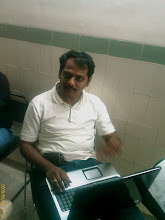In my country, India, traffic is a well known and accepted problem. With the growth in number of vehicles, Of course infrastructure is not able to cope up leading to congestion in most of the roads in the urban area.
One of the quickest solution applied by the authorities is to create one way traffic on most of the congestion prone junctions. This of course solves the problem when there are only few junctions with traffic problem and when a city has limited one ways. If the number of one ways are increased beyond a limit, the solution back fires with increased traffic conditions rather than smooth traffic.
Traffic is directly proportionate to number of vehicles are present at a particular point in time. if there is a particular bottleneck with of movement of 1 car a second where there are 2 cars coming e ery second, we will have an increased traffic. as every other car will have to wait every second. And very soon there will be a huge queue of cars. If 3 cars want to pass every second, the traffic will be twice as high for case of 2 cars. and Nth car will need N seconds to cross the bottleneck.
After a while, the queue will become so long that some other alternate route (typically longer with less traffic) will become more attractive than this bottleneck and some adventurous drivers will start exploring this alternative. With this diversion, with time, the traffic situation may get to an equilibrium.
Of course, this is an ideal case and there will be many realistic cases possible because the drivers may try out multiple ways to go ahead of others which may actually end up in some sort of deadlock.
Now lets talk about a complete city, lets say there is total of X of road lanes in the city. Length of a car is Y meters. and there are Z number of cars on the road at a particular time. As long as X is way too high compared to Y*Z, there should not be major traffic. Now lets say there are few bottlenecks and to solve problems around the bottlenecks one way traffic is implemented by autorities. Since now amount of travel every car needs to do incfreases, there is a risk that every car is going to stay on the road for longer time thereby increasing number of vehicles on the road at a particular time. (Assumed that cars are on the road only during the travel. otherwise they are parked outside the road). And there will be a threshold after which the time on the road increases so much that the solution back fires.
After talking about traffic, now let us try realating it to business and economy...
Consider every car to be an individual who wants to travel some distance to reach financial goals. To reach these goals he invests his savings and is trying to make it grow. External situation right from rains, tornados to government policies to frauds done by industrialists will create bottlenecks for this individual to move towards his goals. Just as in traffic bottleneck, as soon as he knows that a particular way may take longer than another long but fast way, he will start shifting his/her investments. the only difference here is that everyone gets information at differnet time from different sources analysed differently, hence there is complete caos.
To manage all these and to provide benefits to those who are not well to do, all the governments have different rules for different groups of individuals like different income tax rules, unequal priorities etc. These things work only till the time these rules and policies are fairly limited to total number of people otherwise, it may create bigger problems than solving problems at hand.
Wednesday, July 8, 2009
Subscribe to:
Comments (Atom)
